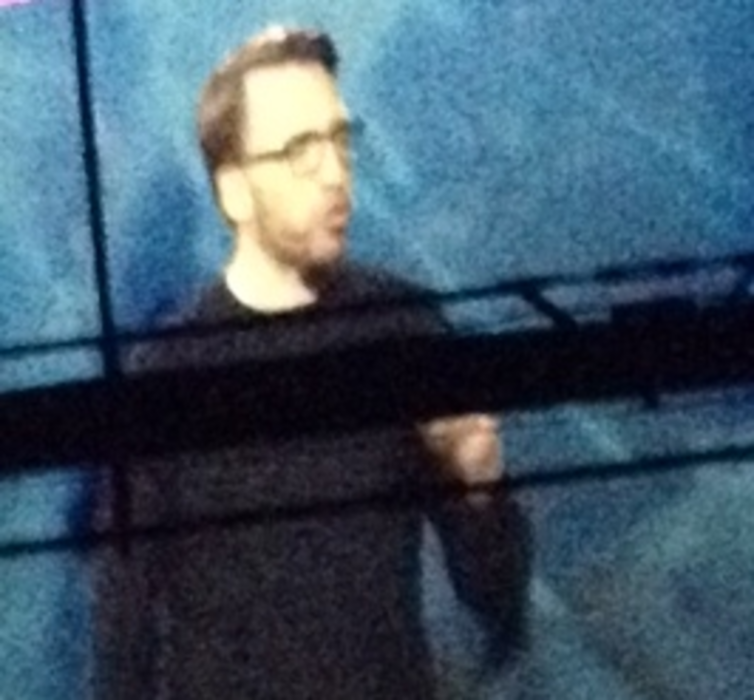“Fragmented, disparate tech just doesn’t get you there,” said Brad Rencher, EVP and general manager of digital marketing at Abobe, from the stage of the Venetian Ballroom in Las Vegas this morning. Moments before, he had announced The Experience Cloud, Adobe’s new umbrella term under which familiar — and new — cloud offerings will sit.
Rencher himself had been introduced by Adobe president and CEO Shantanu Naruyen, as the “architect” of the Experience Cloud, which Naruyen also said represented a “bigger opportunity than the marketing cloud.” Rencher’s presentation of the Experience Cloud was focused the message that it doesn’t just represent a new schematization of Adobe’s products, but reflects the “new battleground where we will all compete for the foreseeable future.
Becoming an Experience Business
The Adobe Summit may not have the showbiz flash of Dreamforce, but it was a bold, outspoken, forceful Adobe which showed up in Vegas today, claiming continuing supremacy in the marketing cloud wars, and even taking a sideswipe at Salesforce’s AI offering along the way.
Being an experience business, Rencher explained, means recognizing: “You are no longer selling products; you’re selling an experience.” In other words, competing means going beyond quality and price to focus on a customer experience which, he said, now goes “well beyond marketing.” The Experience Cloud, Rencher says, was “born in marketing, but built for the enterprise.”
Not that he was downplaying Adobe Marketing Cloud’s achievements, describing it as the “undisputed leader — we created the category.”
What does the experience business mean for customers? Rencher offered four mantras. It means you:
- Know me and respect me
- Speak in one voice (and always in context)
- Make technology transparent, and
- Delight me at every turn.
It’s immediately clear that these principles are meant to be reflected in an enterprise’s full range of activities; and this is reflected — to some extent — in the new Experience Cloud’s architecture, with the Marketing, Analytics, and new Advertising Cloud comprising the Experience Cloud’s main components, with integration to the well-established Creative and Document Clouds. The Marketing Cloud, as before, still includes solutions like Experience Manager, Target, Campaign, and Social, and Audience Manager still sits under the Analytics Cloud.
The Advertising Cloud, newly announced at Summit, is an end-to-end platform for managing advertising across all channels, including traditional TV as well as digital formats. It combines the capabilities of Adobe Media Optimizer, with new functionality acquired in the purchase of TubeMogul, the leading video DSP, at the end of last year.
No to dead scientists
Other key announcements related to the Adobe Cloud Platform, now leveraging Adobe’s AI and machine learning framework, Adobe Sensei. The cloud platform, said Rencher, had seen the company’s “single biggest investment in product this year.” The platform supports the higher-level solutions by integrating content and data from across the various Clouds.
And — as you might expect in 2017 — it leverages machine learning capabilities to activate the content and data, recommending customer experiences and guiding customer journeys based on an understanding of profiles and behaviors, at high speed, and at enormous scale. Sound familiar?
“Our competitors have names of dead scientists, but don’t have the products,” said Abhay Parasnis, Adobe CTO. “We have the products.” Ouch.
Sensei had already powered intelligent alerts and automated lookalike modeling, for example. New capabilities announced today are:
- Fluid experiences: Delivering a seamless experience to customers across connected devices, including IoT. (There was a demonstration of an in-store screen displaying alternate product messages depending on the customer standing in front of it.)
- Enhanced anomaly detection/contribution analysis: Identifying unusual events relevant to optimizing the customer experience, and
- One-click personalization
Nine out of ten companies, Rencher said, now say they compete primarily through the experience. “It’s a complete mindset shift,” he said. From Photoshop to the Marketing Cloud, and now to the Experience Cloud, Adobe has shifted a long way too.
I’ll be drilling deeper into some of these announcements: Stay tuned.
Adobe covered DMN’s expenses to attend Summit. Photo of Brad Rencher by Kim Davis.








